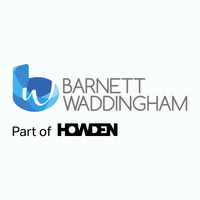Five ways to make your benefits communications inclusive
You might have an impressive range of employee benefits you’d like to promote, but you need to communicate about them in a way that’s inclusive and accessible to everyone. If not, you might be at risk of isolating employees and disengaging them.
One size doesn’t fit all when it comes to creating effective communications, but providing accessibility and inclusivity should be the norm, especially after the recent introduction of the Financial Conduct Authority’s Consumer Duty rules.
Here are five ways to make sure your benefit communications hit the target:
1. Know your audience
By working hard to engage with your people through surveys, focus groups and other interactions to get their feedback, you’ll be able to gather data that highlights what types of communications are working for them. Analysing this data more will also allow you to segment your communications to better tailor them around particular audiences, by age for example.
According to the Royal National Institute of Blind People, more than 2 million people in the UK are living with sight loss, which can affect how they interact with content. In the process of finding out what works best for your employees, you might also find specific, additional needs - such as sight loss and other accessibility needs - which need addressing.
2. Consider your format
So if your research highlights certain accessibility needs, make sure you factor these in when deciding how best to communicate your benefits messaging. The current format might not be best suited to some people, so by offering alternative formats, you’re letting them know they don’t have to settle for one that isn’t accessible to them.
These options could include braille, large font or audio transcript. Individuals with a physical or motor disability might struggle to pick up the phone and call, so be sure to give them more than one contact method. Including clear signposting to trusted external websites for support and information is another simple way to provide that additional help.
There are other simple things you can do to make your communications accessible without knowing the individual needs of your audience – for example using colours that are easy for people who are colour blind to view.
3. Be understood
Communicate in a way people can easily understand.
With an average reading age in the UK of nine years old, communications need to be simple and accessible for everyone. Use universal language, terms that aren’t specific to gender and avoid words and phrases with racist, disablist or homophobic connotations.
Even the most beautifully crafted messaging is wasted if your audience can’t access or understand it.
4. Structure for readability
Think about how the overall piece is structured, the order of information, your choice of colours in a pie chart or graph, or how to the text is aligned. For the visually impaired, it’s best practice to use broad margins and left-aligned text so screen readers can easily locate the next line.
Make it really clear what the purpose of the communication is and position any key messages front and centre.
Keep introductions short, provide clear instructions about what needs to be done next and consider if any information can be housed elsewhere, such as in a common question and answers guide.
Breaking up large chunks of text with subheadings and including clear visual signposting through numbers and colours will help readability.
5. Display diversity
Using a diverse range of imagery can help minority or marginalised groups feel represented. Collaborate with designers to make sure consideration is given to colours, fonts, spacing, closed captions and transcripts so everyone has access to the information they need.
By making your benefit communications inclusive, you’ll be well on track to reaching your engagement goals and empowering people to make better informed decisions around their rewards and wellbeing.
Supplied by REBA Associate Member, Barnett Waddingham
Barnett Waddingham is proud to be a leading independent UK professional services consultancy at the forefront of risk, pensions, investment, and insurance. We work to deliver on our promise to ensure the highest levels of trust, integrity and quality through our purpose and behaviours.








